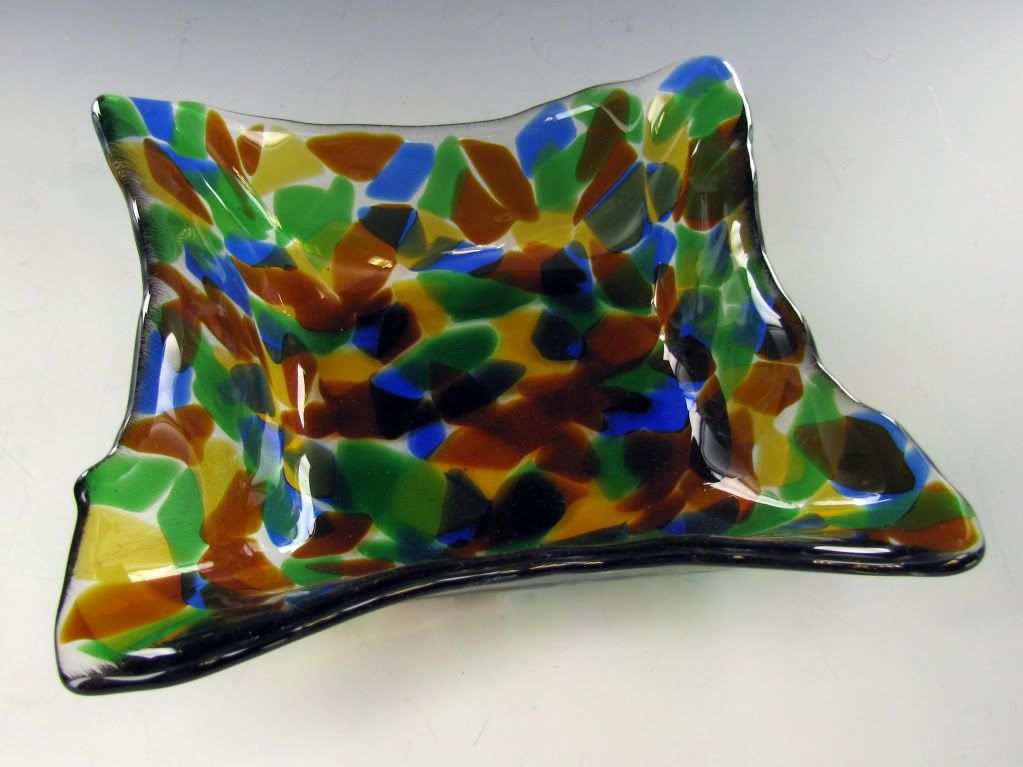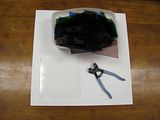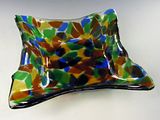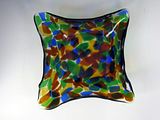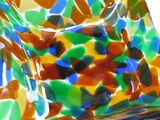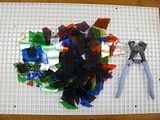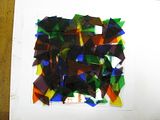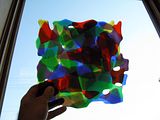Scatter platters are a really fun and easy warm glass project, and also a good way to use up the scrap glass, a.k.a. decorative elements, that you've accumulated from other projects. This is a project that will be Full Fused. There are two ways to make these, on a blank and for the more adventurous fusers, without a blank.
To get started, the first thing you will need to do is gather everything you will need for this project:
Glass Blank
Scrap Glass (Transparent glass looks the best because the glass will be overlapping, which adds more colors)
Wheeled Mosaic Nippers
Thinfire paper
Kiln Shelf or Kiln-washed Tile
Version 1
Now that you have everything, start by nipping the scrap glass into small pieces.
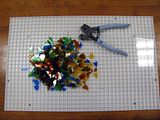
Next, create a second layer by arranging the pieces randomly on the blank. After adding the second layer, I made a third layer by overlapping the glass pieces. Otherwise, it will look like a mosaic, which looks good, but not what I was trying to make. If you did want to make a mosaic, you can use fine or medium Frit and brush it in the gaps between the glass pieces on the second layer.
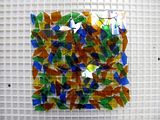
After the third layer is added, fuse it and slump it and it will look something like this:
Version 2
Now to show you how to make one without a blank, and let you know what you should avoid to get the best results.
Keep in mind, this project will need to be assembled on a kiln shelf, tile, or directly in the kiln. First, I used a pencil to make an outline of a glass blank on thinfire paper the size of my project and laid the paper on a kiln shelf. Next, I cut up scrap glass into larger pieces than I did for the previous project.
Then I started laying the pieces of glass within the lines of my outline, and did so in three layers. This is where you need to be cautious with how much colored glass you use. I made this project 3-4 layers high, forgetting that if the transparent glass is more than two layers thick, it starts to become very dark. So if I was going to recreate this project, which I certainly will, I will use just as much clear glass as I do pieces of colored transparent glass.
Now look at how dark it becomes when it is fused.
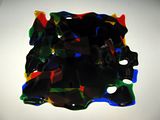
I originally was going to slump this piece into a bowl, but seeing how dark it is when laying flat I decided against it, and will probably drape it for a pendant light because it looks better when light is shining through it.
Tips for success:
1. Have fun!
2. Avoid using too many layers of colored transparent glass.
3. Use a lot of clear glass to keep your project from becoming too dark.
4. Have fun!
Happy fusing!
-Warm Glass Guy
